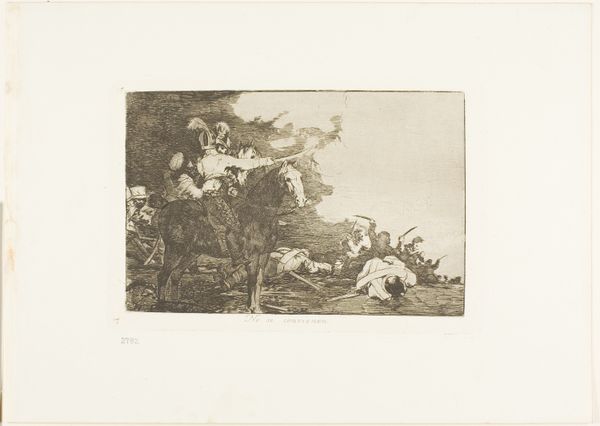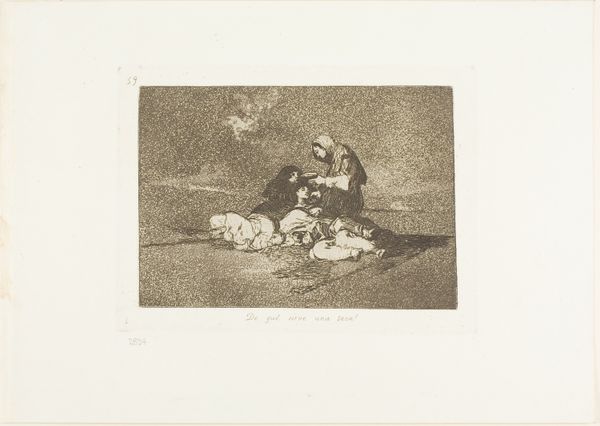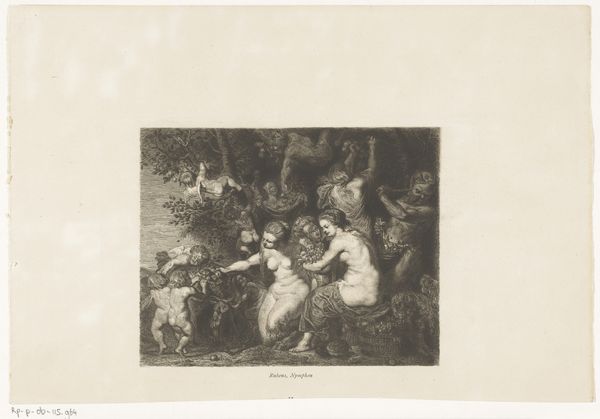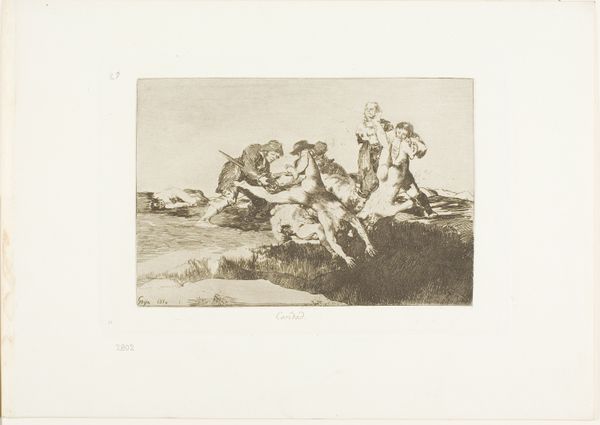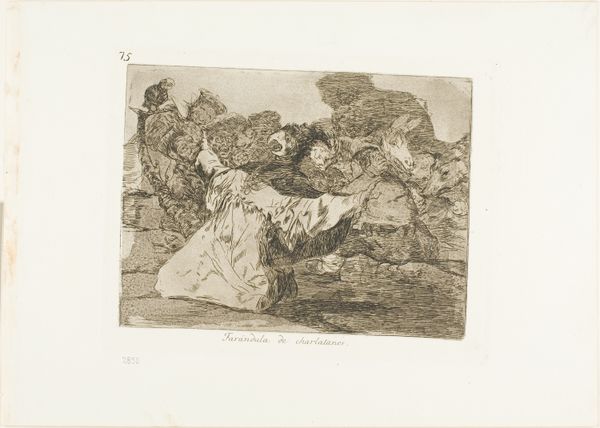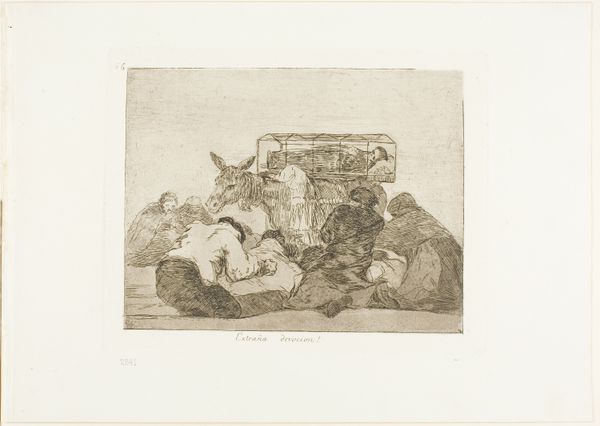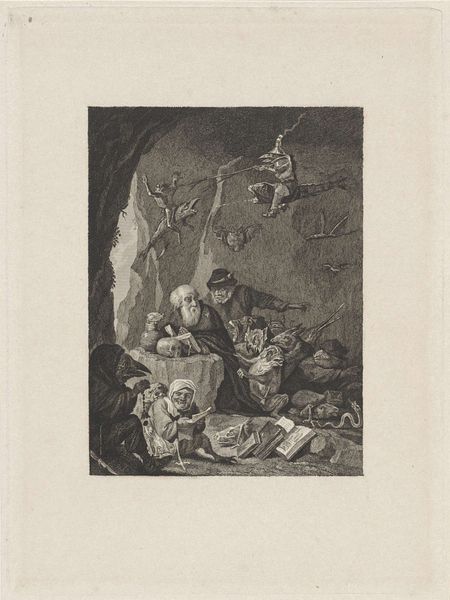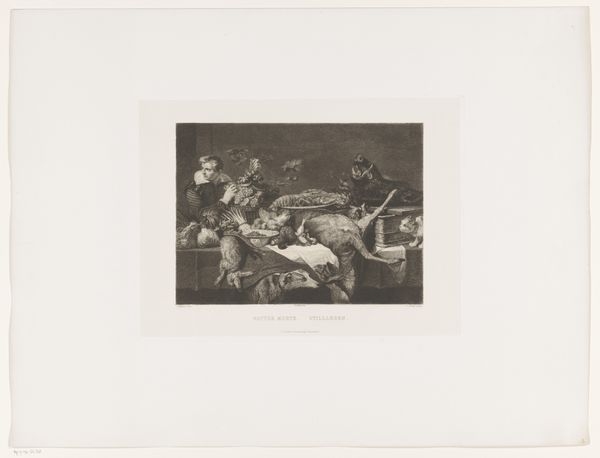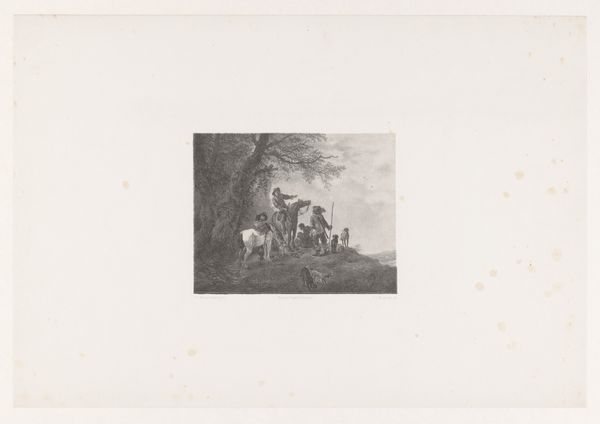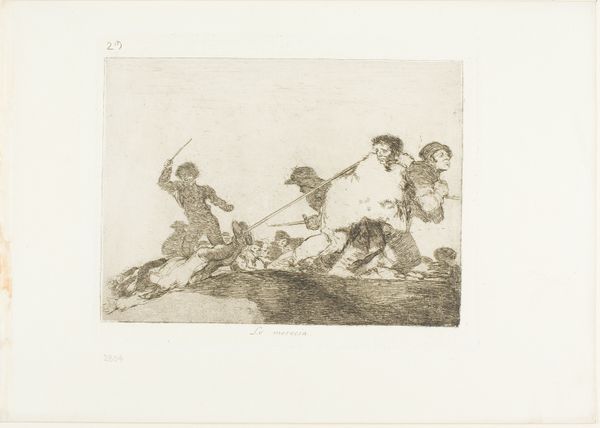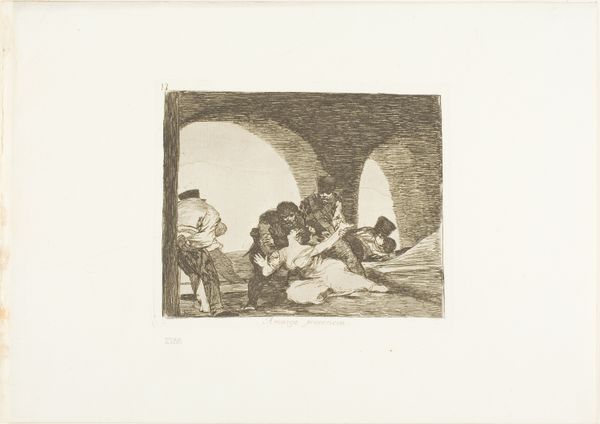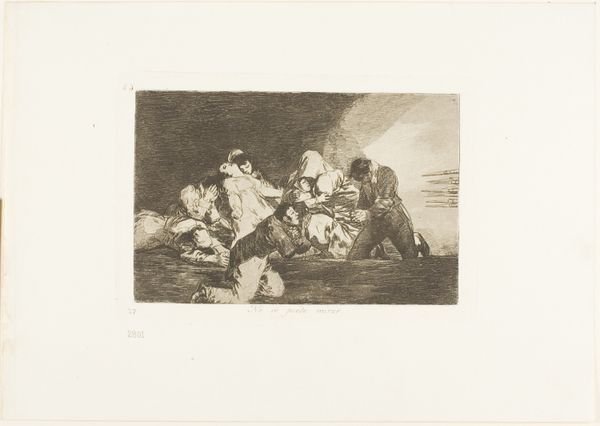
It Serves You Right, plate six from The Disasters of War Possibly 1810 - 1863
0:00
0:00
drawing, print, etching, paper
#
drawing
#
narrative-art
# print
#
etching
#
war
#
paper
#
romanticism
#
genre-painting
#
history-painting
Dimensions: 122 × 190 mm (image); 143 × 210 mm (plate); 240 × 339 mm (sheet)
Copyright: Public Domain
Curator: Goya’s "It Serves You Right, plate six from The Disasters of War" assaults the senses. It's visceral in its depiction of violence, composed as an etching on paper. I see it was possibly created anytime between 1810 and 1863 and resides at the Art Institute of Chicago. What strikes you most about it? Editor: The overwhelming sense of brutal intimacy. The figures are packed together, almost obscuring the act of violence, yet the stark contrast and graphic detail draw you in. It's difficult to look away. What's the significance of the title, I wonder? Curator: It's laden with bitter irony, given the unspeakable actions taking place. It acts almost as a moral commentary. Goya utilized imagery that evokes raw emotion and, dare I say, an eternal message about the inhumanity of warfare and conflict. The image has so many resonances across time. Editor: Absolutely, it's a timeless denouncement of conflict. Goya witnessed the Peninsular War firsthand, right? And he created this entire Disasters of War series during and after those tumultuous years? It speaks volumes about the role of artists bearing witness and holding power to account, using imagery when words fail. Curator: Precisely. Think about the victims throughout history whose sufferings echo here. These figures and symbols of the downtrodden recur in art from Daumier to Picasso. Do you notice the use of light and shadow? How the stark contrast creates drama? Editor: Indeed. It amplifies the chaos. It is clear that the scene is designed to provoke not just empathy, but anger, making us question what allows these barbarities to take place. Curator: It's the kind of work that transcends mere representation; it embodies a psychological space, almost a primal scream against injustice. Editor: Which reminds us of the vital function art serves within broader society, continually challenging accepted narratives and providing perspective to political struggles and the human condition. Curator: A somber image but one that echoes even today, forcing us to look inward. Editor: Indeed. Goya forces us to examine our own humanity or lack thereof, even now.
Comments
No comments
Be the first to comment and join the conversation on the ultimate creative platform.
